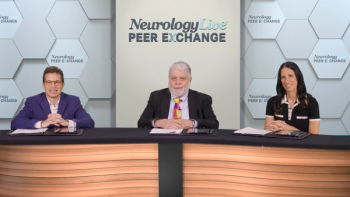Praxis Precision Medicines announced positive data from a randomized withdrawal sub-study and long-term extension of its pivotal, phase 2b Essential1 study (NCT05021991) assessing its investigational agent ulixacaltamide in patients with essential tremor. All told, patients treated with the agent showed maintained or improved efficacy, as measured by mean changes in the modified Activities of Daily Living 11 (mADL11) scale, otherwise the primary end point.1
During the initial 8-week double-blind period, patients treated ulixacaltamide demonstrated a mean improvement of 3.09 (95% CI, 0.98-5.2) points on mADL11. After continuing on to the 6-week open-label extension (OLE), patients gained an additional mean improvement of 1.7 points in mADL11, totaling 4.81 (95% CI, 2.38-7.23) at 14 weeks. Above all, the therapy continued to show a safety profile that was consistent with previous observations.
"We were extremely happy to see the OLE and randomized withdrawal results providing further support of the potential durable benefit and safety profile of ulixacaltamide," Marcio Souza, president and chief executive officer at Praxis, said in a statement.1 "We believe the randomized withdrawal sub-study confirmed the robustness of the Phase 3 design and, together with the 14-week data from the OLE of Essential1, reinforce the assumptions used for our upcoming Phase 3 program. We look forward to sharing more about these data and our Phase 3 program details at our upcoming R&D portfolio day in early October."
Ulixacaltamide is a differentiated and highly selective small molecule inhibitor of T-type calcium channels designed to block abnormal neuronal burst firing in the Cerebello-Thalamo-Cortical (CTC) circuit correlated with tremor activity. In the study, 26 individuals switched from placebo to ulixacaltamide after the double-blind period. Results showed that this group experienced a mean improvement in mADL11 of 3.15 points, from 1.21 (95% CI, –1.04 to 3.46) at week 8 to 4.36 (95% CI, 1.68-7.05) at the end of the OLE period.
READ MORE: Investigational Agent ANPD001 Demonstrates Preclinical Safety and Efficacy for Parkinson Disease Treatment
In addition to releasing topline results from the OLE, the company amended the open-label protocol to further assess the criteria to be used in the upcoming randomized withdrawal phase 3 study. A total of 21 patients who completed assignments at week 14 of the OLE were included, of which 11 were assigned to ulixacaltamide and 10 to placebo for 3 weeks, followed by a crossover period of 3 weeks. Blinded rescue was triggered for patients on placebo if loss in the mADL11 exceeded 2 points at any time point.
Among those who switched from active treatment to placebo, investigators observed an average loss of effect in their mADL per week of 47%, otherwise a mean less of effect of –1.15 points/week, compared with 6% improvement in global mean change per week for the periods receiving ulixacaltamide. Between the groups, 85% (17 of 20) and 52% of those on ulixacaltamide and placebo, respectively, maintained their mADL11 within 3 points relative to baseline. Of note, 10 patients assigned to placebo met the rescue criteria to restart ulixacaltamide. Responder criteria, along with feasibility of rescuing patients, are newly proposed design elements for the phase 3 study.
Key Takeaways
1. Ulixacaltamide Shows Promise: Data from Essential1 study highlight ulixacaltamide's potential durable benefit and safety for treating Essential Tremor, supported by open-label extension and randomized withdrawal sub-study results.
2. Stability and Rescue: Randomized withdrawal sub-study underscores patient stability with ulixacaltamide, contrasting with placebo. Feasibility of rescuing patients with ulixacaltamide is validated, informing Phase 3 study design.
3. Addressing Unmet Need: Ulixacaltamide offers hope for Essential Tremor treatment, targeting abnormal neuronal activity in the Cerebello-Thalamo-Cortical circuit. Its potential for improved efficacy and tolerability could fill a significant gap in current treatment options.
Most recently, Praxis completed an end-of-phase 2 meeting with the FDA to discuss plans of the phase 3 program. Key elements of the registration plan include use of the mADL11 as the primary end point, as well as use of a single dose of 60 mg as the observed dosage. There will be 2 phase 3 studies, a 12-week, parallel design study, and a 12-week randomized withdrawal study for stable responders. As part of a requirement by ICH guidelines, a total of 300 patients with at least 6 months of exposure and 100 patients with 1-years worth of exposure will be needed for a new drug application submission.2
In March, the company released topline results from the double-blind portion of Essential1 assessing ulixacaltamide in doses of 60 or 100 mg in a cohort of 132 patients. In the modified intent-to-treat analysis (n = 116), ulixacaltamide (n = 78) showed numerical difference vs placebo (n = 38) at day 56 in the mADL score (ulixacaltamide: –3.01 points; placebo: –1.44 points; P = .126) and a nomimal statistical significance vs placebo in the TETRAS-ADL secondary end point (ulixacaltamide: –3.60 points; placebo: –1.07; P = .0026).3
In terms of safety and tolerability, no dose-dependent relationship was observed in either of the cohorts. The most common treatment-emergent adverse events (TEAEs), reported in more than 5% of treated individuals, included dizziness (14.3%), constipation (9.9%), headache (8.8%), fatigue (8.8%), anxiety (6.6%), feeling abnormal (6.6%), and paranesthesia (6.6%). There were no drug-related serious AEs, and the rate of discontinuations because of AEs was slightly higher in the ulixacaltamide group (12%) than on placebo (3%).
REFERENCES
1. Praxis Precision Medicines announces positive data from randomized withdrawal sub-study and long-term extension of Essential1 study for ulixacaltamide. News release. Praxis Precision Medicines. August 8, 2023. Accessed August 8, 2023. https://investors.praxismedicines.com/news-releases/news-release-details/praxis-precision-medicines-announces-positive-data-randomized
2. Praxis Precision Medicines announces plans to begin ulixacaltamide phase 3 in essential tremor by year end after completing end of phase 2 meeting with FDA. News release. Praxis Precision Medicines. June 9, 2023. Accessed August 8, 2023. https://www.biospace.com/article/releases/praxis-precision-medicines-announces-plans-to-begin-ulixacaltamide-phase-3-in-essential-tremor-by-year-end-after-completing-end-of-phase-2-meeting-with-fda/
3. Praxis Precision Medicines announces topline results from the Essential1 study of ulixacaltamide for the treatment of essential tremor and continued advancement of program to phase 3. News release. Praxis Precision Medicines. March 3, 2023. Accessed August 8, 2023. https://investors.praxismedicines.com/news-releases/news-release-details/praxis-precision-medicines-announces-topline-results-essential1







































